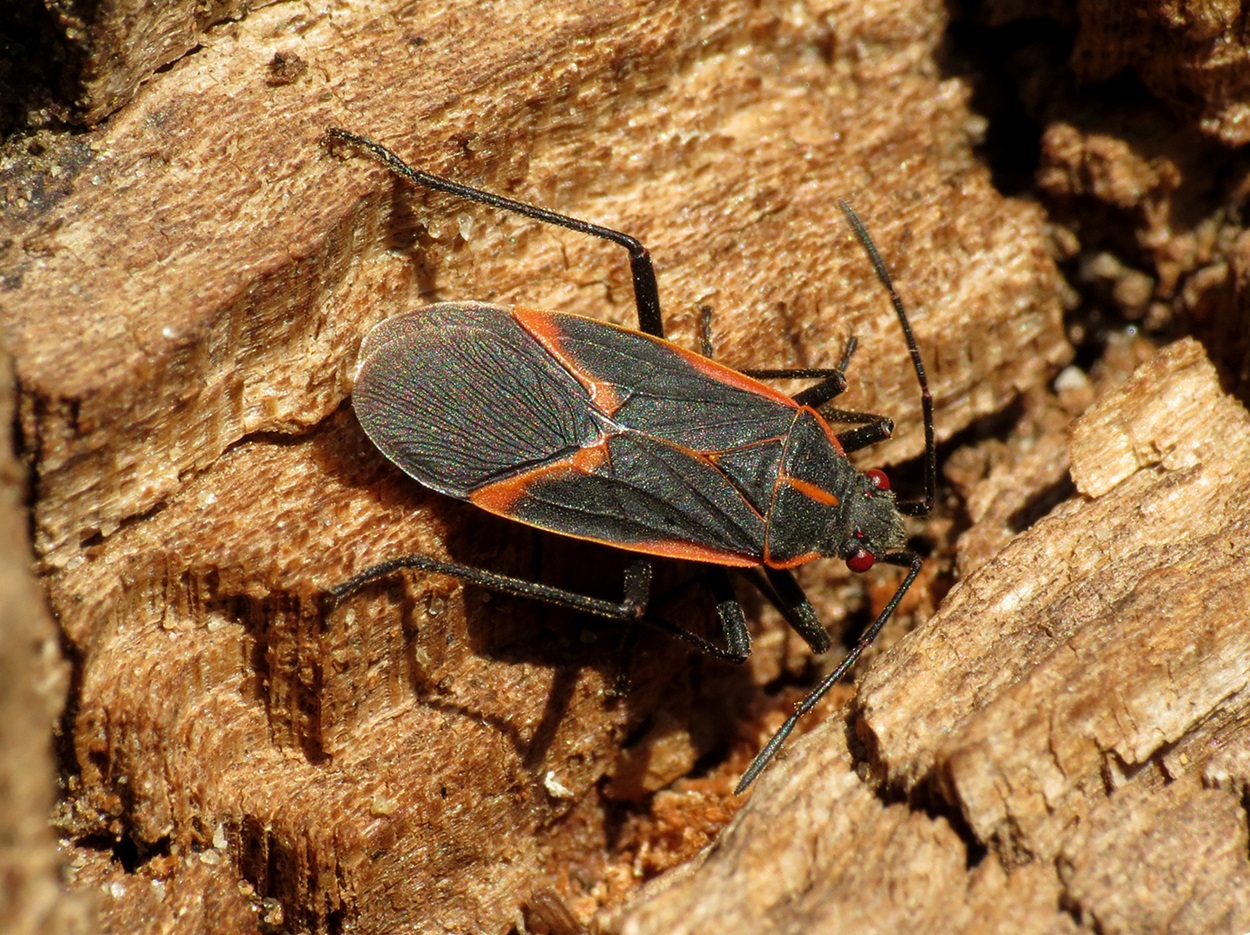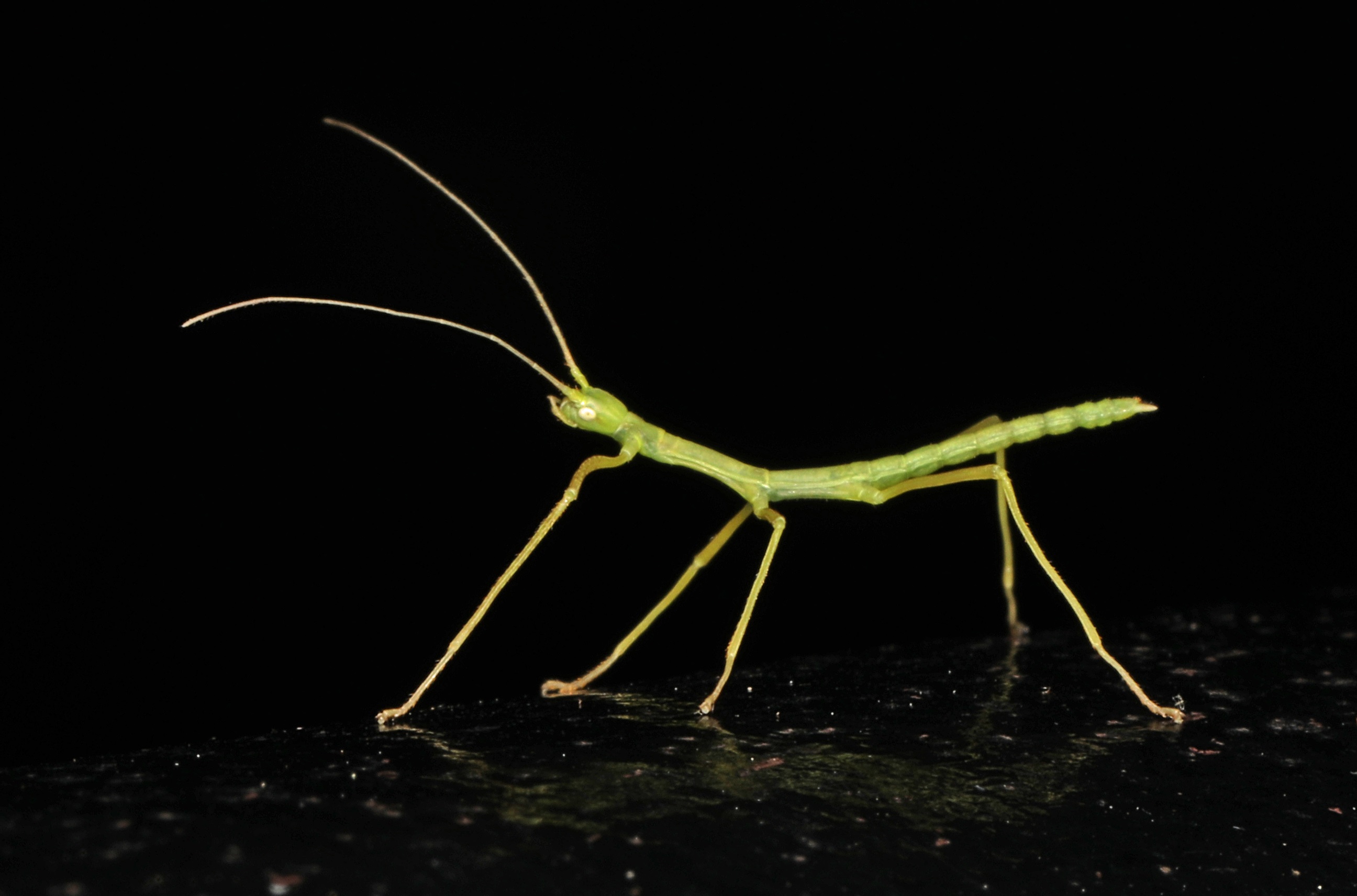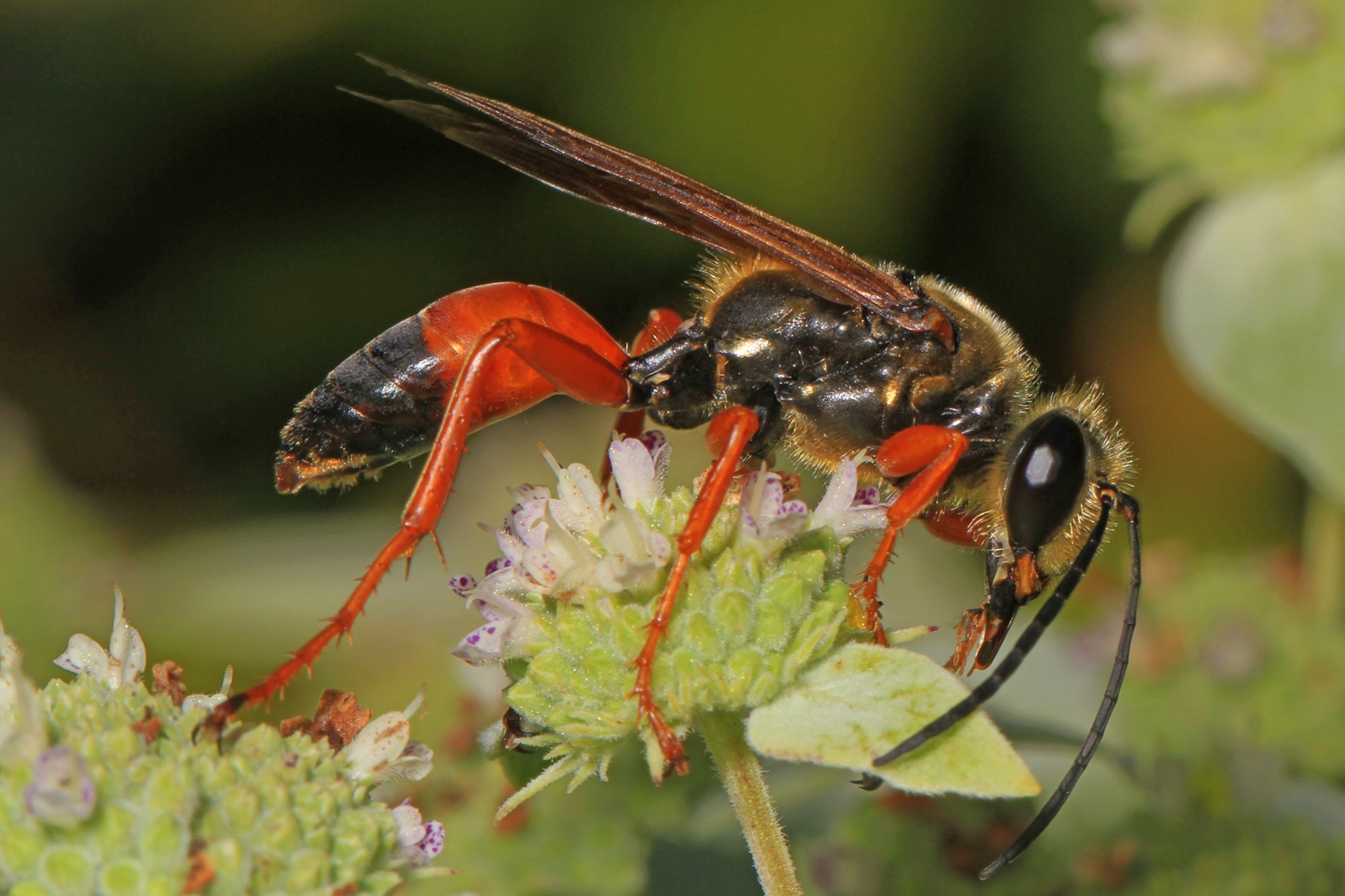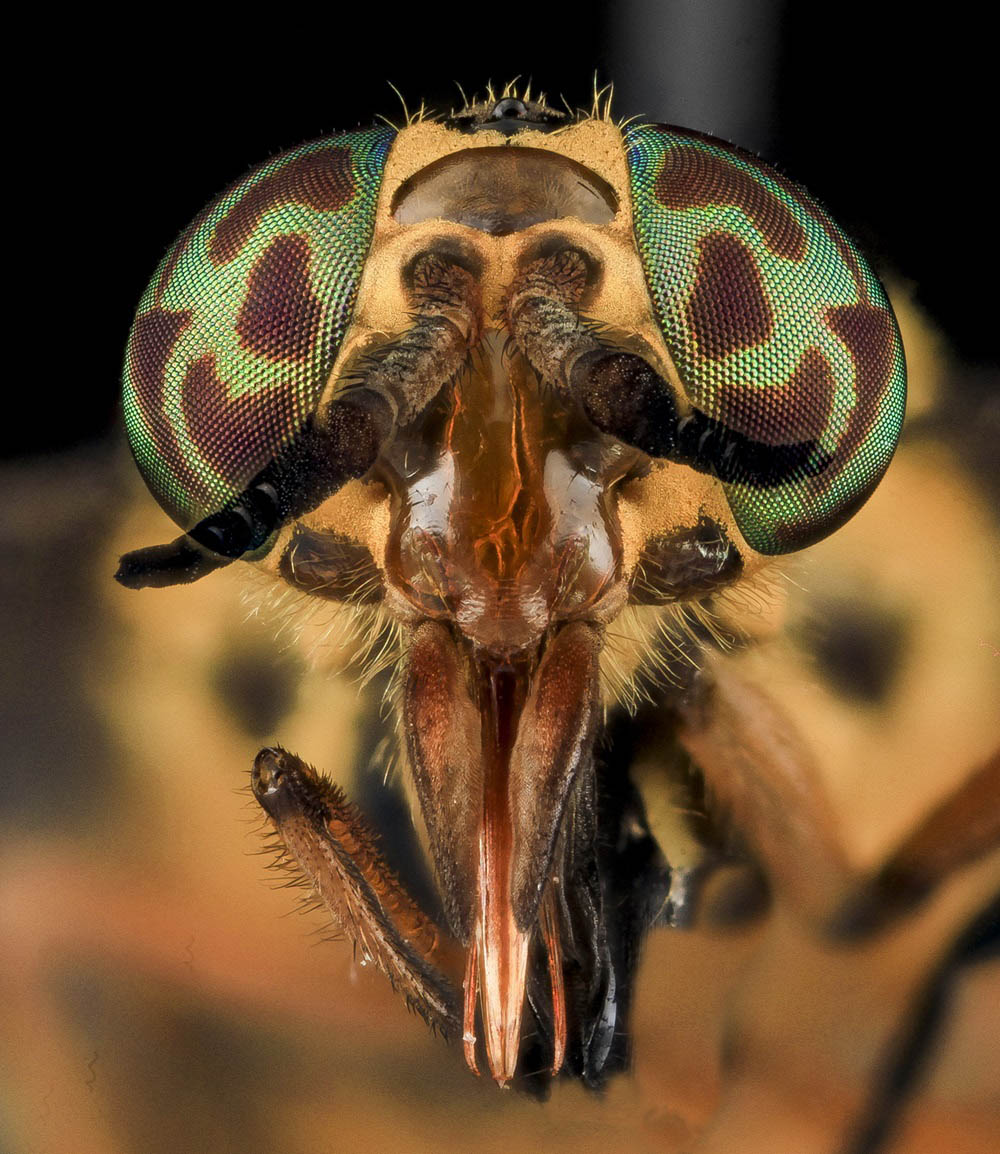Earwigs are insects in the taxonomic order Dermaptera, meaning “skin wing,” a name that refers to the short, leathery forewings that cover and protect their large, folded hindwings. Approximately 2,000 species of earwig are described worldwide, with about 7 species recorded in Canada. Contrary to common myths, earwigs do not crawl into ears, and this folklore has no basis in fact. Earwigs can be beneficial to gardeners by acting as scavengers, detritivores and predators of pest insects. However, in high numbers, they can be a nuisance.
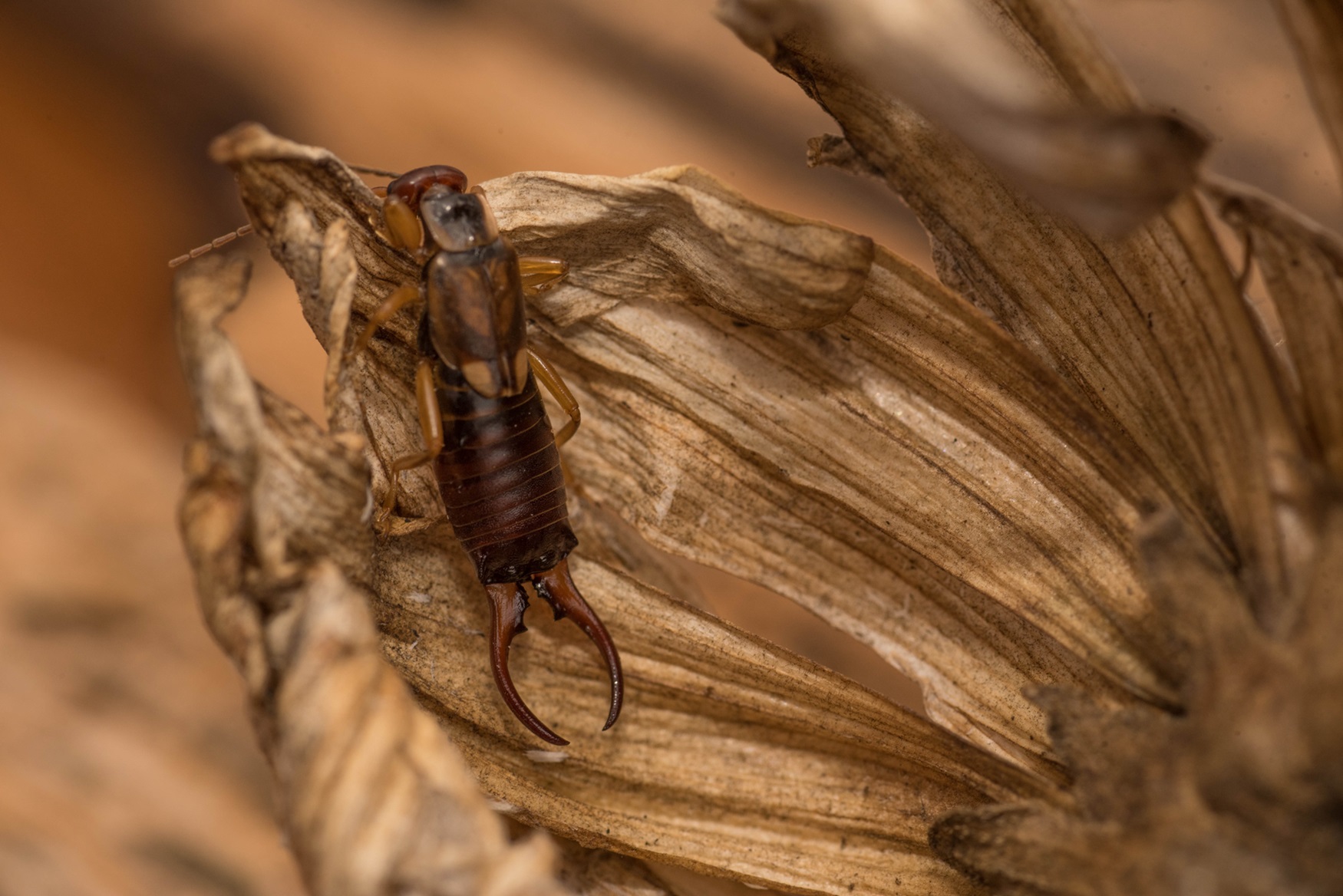
Description
Insects in the order Dermaptera are long-bodied, somewhat flattened insects with long, thread-like antennae and a hard, shiny exoskeleton that is reddish-brown to dark brown in colour. Earwigs are easily identifiable by the pincer-like cerci at the end of their abdomens, which are used in courtship, defence and prey capture. All species of earwig have these structures, with males usually having larger, heavier and more strongly curved cerci, while females tend to have smaller, straighter cerci.
Many species of earwig can fly, but rarely do so. Instead, they prefer to run from place to place. Several species lack wings entirely. When present, the large, membranous hindwings fold like a fan beneath short, leathery forewings. The hindwings are semicircular and pleated, and, when unfolded, can reach 10 to 15 times their folded size.
In Canada, adult body length ranges from about 4 to 30 mm: the lesser earwig (Labia minor) is 4 to 7 mm, while the seaside earwig (Anisolabis maritima) is 15–30 mm. The largest known species in the world was likely the extinct Saint Helena giant earwig, Labidura herculeana, which reached up to 80 mm.
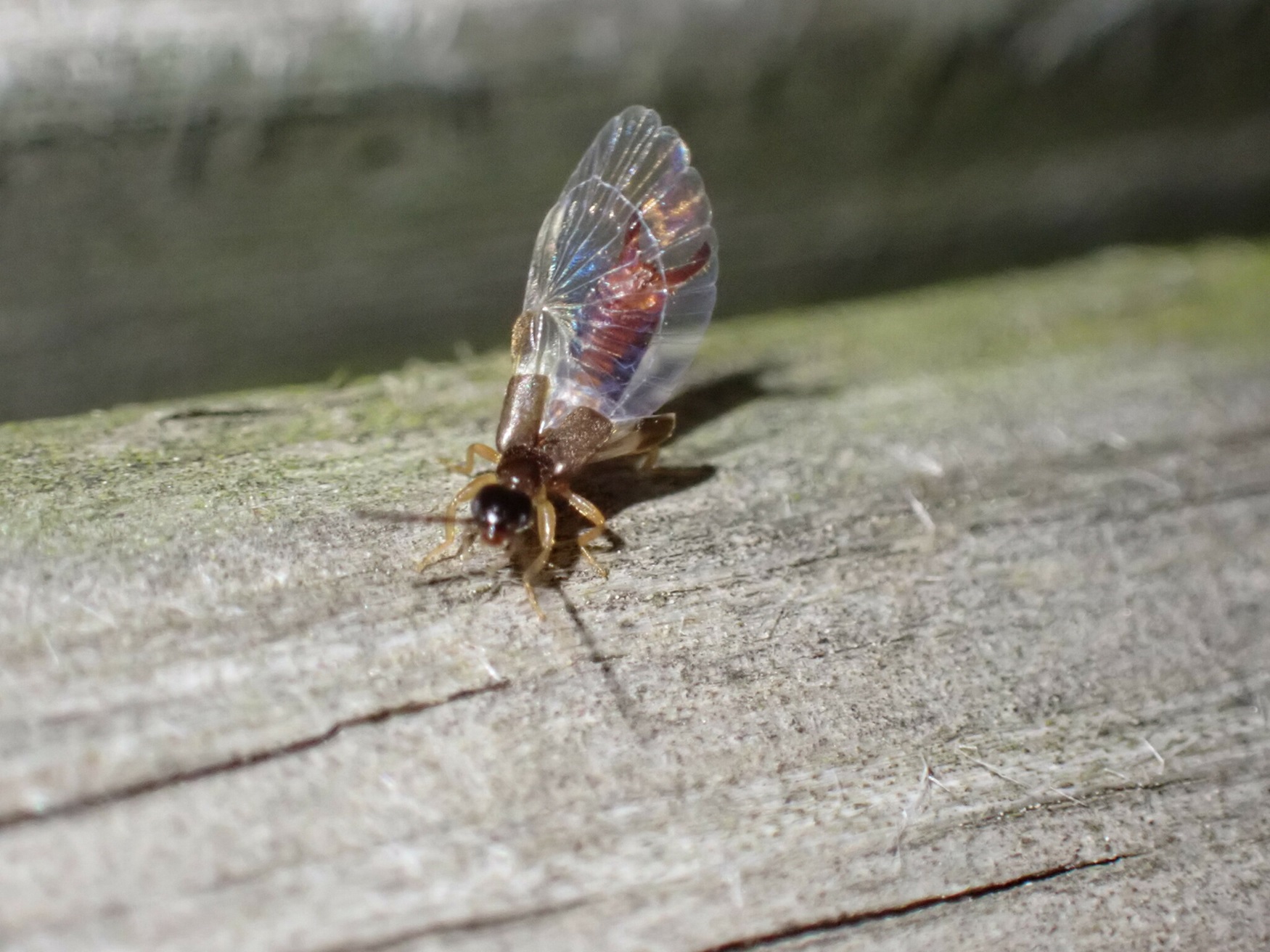
Distribution and Habitat
Earwigs are found on every continent except Antarctica, with the greatest diversity in warm, humid regions, especially in the Southern Hemisphere. In Canada, they occur mainly in coastal and southern inland areas, where milder climates provide shelter and moisture.
Canada has only one native earwig, the spine-tailed earwig (Doru aculeatum), recorded in marshes and wetlands of southern Ontario. The most commonly encountered earwig in Canada is the European earwig, introduced from Europe in the early 20th century. The European earwig was once treated as a single species, Forficula auricularia, but is now recognized as a species complex that can be divided into at least four different species. In Canada, two cryptic species are found, F. auricularia and F. dentata. Although these species do not interbreed, they look identical and usually require DNA testing to tell them apart.
Earwigs are mainly nocturnal, taking shelter during the day in damp, tight spaces such as under bark, stones, logs, debris and among fallen leaves. They occupy habitats ranging from gardens and agricultural fields to forests and urban areas.
Reproduction and Development
Earwigs are hemimetabolous insects, meaning they hatch from eggs into nymphs that resemble small, wingless versions of the adults. Nymphs pass through four to six moults before becoming adults. In temperate regions, the life cycle often takes about one year, though some species can produce more than one generation per year.
In Canada, mating usually occurs in late summer or autumn. In many species, courtship involves the male using his cerci to touch, grasp or position the female before mating. Females overwinter with fertilized eggs before laying them in late winter or spring. Depending on the species, a female may produce around 20 to 90 eggs in an underground nest or burrow. Earwigs are notable for maternal care: the female actively tends the eggs, keeping them warm, protecting them from predators and cleaning them. Studies show that cleaning and chemical protection from the mothers help prevent fungal infections on eggs. She remains with her young for some time even after they hatch, guarding and caring for them until they disperse.
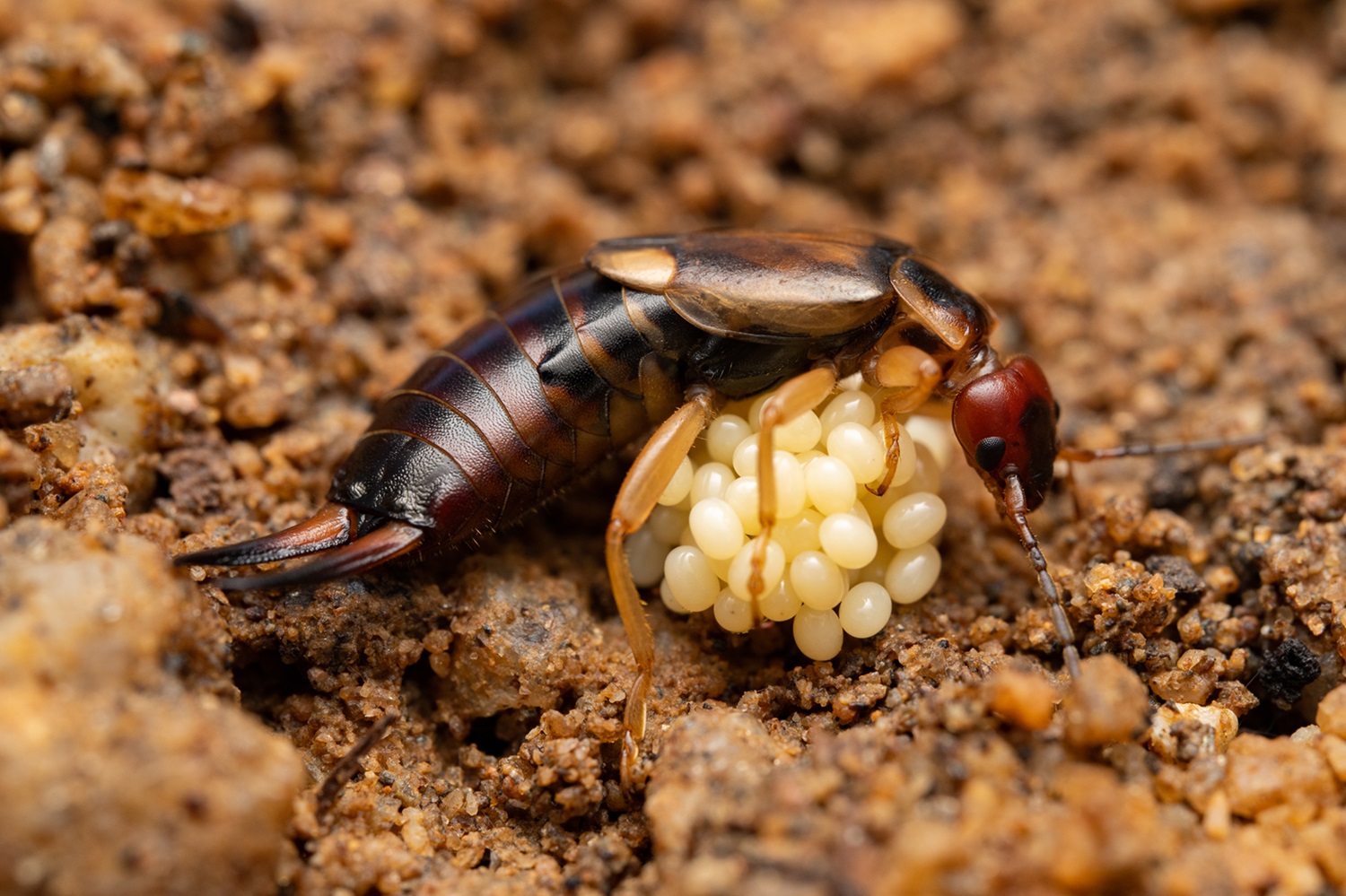
Diet and Predators
Most earwigs are omnivorous, scavenging decaying organic matter, fungi and occasionally living plant tissue. Many are opportunistic predators that hunt aphids, mites, insect eggs and other soft-bodied prey, including the eggs and young of other earwigs.
Earwigs are prey for many animals, including amphibians, birds, small mammals, spiders and predatory insects. When disturbed, some species release a strong-smelling defensive fluid, and individuals may pinch with their cerci.
Cultural Significance
The name “earwig” stems from the old European myth that the insects crawl into human ears at night. This belief has no factual basis; earwigs have absolutely no interest in human ears.
Earwigs have also inspired technological innovation. Modern research on their remarkable folding hindwings has helped engineers design compact, deployable structures for tools and spacecraft.
Ecological Importance
In gardens and orchards, small to moderate populations of earwigs provide benefits such as speeding up decomposition and suppressing pests such as aphids and pear psylla. Gardeners are encouraged to tolerate some earwigs, as they provide various benefits. However, in rare instances, large populations can damage crops and ornamental plants, and their potential impact as non-native species in North American ecosystems is not well-understood.
Conservation
No earwig species in Canada are currently considered at risk, and there are no legal protections for them. However, a few species worldwide have faced serious declines. The Saint Helena giant earwig, for example, was declared extinct in 2014, with contributing factors including the removal of surface stones from its habitat and the introduction of non-native predators.

 Share on Facebook
Share on Facebook Share on X
Share on X Share by Email
Share by Email Share on Google Classroom
Share on Google Classroom


